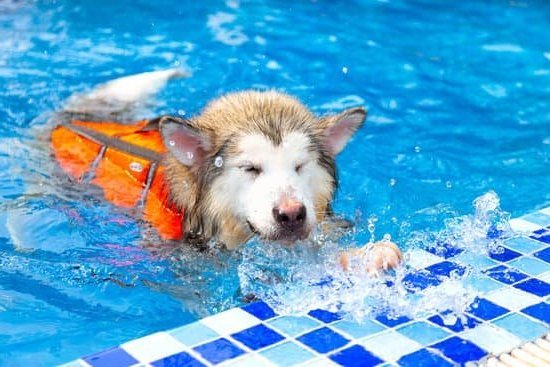Are you struggling with how to train your dog for walks? Proper training is crucial for a smooth and enjoyable experience when taking your four-legged friend out for a stroll. Without the right training, walks can turn into a stressful and chaotic experience for both you and your dog. In this article, we’ll explore the various aspects of training your dog for walks, including equipment, obedience, socialization, positive reinforcement, distractions, consistency, and troubleshooting.
When it comes to walking your dog, having the right equipment is essential. From leashes and collars to harnesses, choosing the appropriate gear plays a significant role in ensuring a safe and comfortable walk for both you and your furry companion. But equipment alone isn’t enough – basic obedience training is also crucial. Teaching your dog commands such as sit, stay, and heel can make a world of difference when out on a walk.
Socialization is another key aspect of proper dog training for walks. Exposing your dog to different environments and other animals helps them become well-adjusted and confident during outings. Additionally, using positive reinforcement techniques like treats and praise can encourage good behavior and create a positive association with going on walks. And let’s not forget about dealing with distractions – knowing how to handle your dog’s reactions to other people and animals during walks is equally important.
In the following sections, we’ll delve deeper into each aspect of training your dog for walks to ensure that you have all the tools and knowledge needed to make every walk an enjoyable experience for both you and your furry friend.
By incorporating consistency and patience into your training efforts while addressing common issues through troubleshooting techniques, you’ll be well on your way to celebrating the progress made in strengthening the bond between you and your beloved pet through proper training for walks.
Choosing the Right Equipment
When it comes to training your dog for walks, choosing the right equipment is crucial for ensuring both your pet’s safety and your ability to effectively control them. Leashes, collars, and harnesses are all important tools that can aid in successful training sessions.
Leashes
The type of leash you choose can greatly influence how your dog behaves during walks. A standard leash is typically 6 feet long and is a good option for most dogs. Retractable leashes can give your pet more freedom to explore, but they can also lead to pulling and other unwanted behaviors if not used correctly. It’s important to consider your dog’s size, strength, and behavior when selecting a leash.
Collars
There are several types of collars available for training purposes, including flat collars, martingale collars, and prong collars. Flat collars are the most common and are suitable for well-behaved dogs. Martingale collars are designed for dogs who tend to slip out of traditional collars, while prong collars should only be used under the guidance of a professional trainer.
Harnesses
Harnesses can be a great option for dogs who tend to pull on the leash or have respiratory problems. They distribute pressure more evenly across the chest and back compared to traditional collars, reducing strain on the neck. There are various types of harnesses available, including back-clip harnesses, front-clip harnesses, and head halters. Each type serves a different purpose, so it’s important to choose one that suits your dog’s individual needs.
By carefully selecting the right equipment for your dog’s walks, you can set yourself up for success in training them effectively and safely navigate outdoor environments together.
Basic Obedience Training
Teaching your dog basic obedience commands is an essential part of training for walks. These commands – sit, stay, and heel – are crucial for maintaining control during walks and ensuring the safety of both you and your dog.
To teach your dog to sit, start by holding a treat close to their nose and then slowly move your hand up, allowing their head to follow the treat and causing their bottom to lower. Once they are in a sitting position, say the word “sit” and give them the treat as a reward. Repeat this process multiple times throughout the day to reinforce the command.
The “stay” command is also important for keeping your dog safe during walks. Start by having your dog sit, then hold out an open palm in front of them while saying “stay”. If they attempt to move, calmly return them to their original position and try again.
Gradually increase the amount of time they must stay before being rewarded with praise or treats. Lastly, teaching your dog to “heel” or walk closely beside you can be achieved using a leash and lots of practice in different environments. With consistency and patience, these basic obedience commands will help ensure successful walks with your furry friend.
Socialization
Socializing your dog is an essential part of their training for walks. It involves exposing them to different environments, people, and animals to ensure they remain calm and well-behaved during outings. This step is crucial in preventing fear or aggression towards new stimuli, and it helps in creating a well-rounded and adaptable pet.
Gradual Exposure
When introducing your dog to new environments or other animals, it’s important to do so gradually. Start with familiar places with minimal distractions before gradually moving on to busier areas. Additionally, consider controlled interactions with other dogs to ensure positive experiences and prevent any negative reactions that may lead to fear or aggression.
Positive Reinforcement
During socialization, it is important to use positive reinforcement techniques such as treats and praise to encourage good behavior. Whenever your dog displays calm and friendly behavior towards unfamiliar surroundings or animals, reward them immediately. This will help them associate positive feelings with new experiences, making future encounters more enjoyable for both you and your furry companion.
Professional Training
For some dogs who struggle with socialization, seeking the help of a professional dog trainer may be beneficial. A professional can provide guidance on how to properly expose your dog to new environments and can offer solutions for specific behavioral issues that may arise during socialization. With patience and consistency, the proper socialization of your dog will pave the way for enjoyable walks for both you and your pet.
Positive Reinforcement
When using treats for positive reinforcement, it’s important to select high-value rewards that are especially appealing to your dog. This could include small pieces of cooked chicken, cheese, or commercial dog treats. Consistency is key when utilizing treats as a reward, as your dog needs to understand that they will only receive the treat when they have performed the desired behavior.
In addition to treats, verbal praise and physical affection are also powerful tools for positive reinforcement. Dogs thrive on their owner’s approval and attention, so offering enthusiastic praise and petting when they display good behavior during walks can be highly motivating for them. It’s important to deliver praise immediately after the desired behavior occurs so that your dog can make the connection between their actions and the positive outcome.
| Positive Reinforcement Method | Examples |
|---|---|
| Treats | Small pieces of cooked chicken or commercial dog treats |
| Verbal Praise | “Good boy.” or “Well done.” |
| Physical Affection | Petting and gentle scratches behind the ears |
Dealing With Distractions
When training your dog for walks, it is essential to address how to handle distractions such as other people and animals. Dogs can often become excited, anxious, or even reactive when encountering unfamiliar individuals or pets during walks. Here are some tips on how to handle your dog’s reactions to these distractions:
- Stay Calm: Your dog looks up to you for guidance, so it’s important to remain calm and composed when they encounter other people or animals. By staying relaxed, you can help prevent your dog from becoming overly excited or anxious.
- Use Positive Reinforcement: When your dog remains calm and well-behaved around other people and animals, be sure to reward them with treats and praise. This will help reinforce the good behavior and encourage them to remain focused on you during walks.
- Practice Controlled Exposure: Gradually expose your dog to different environments and situations where they may encounter distractions. Start with low-stress environments and gradually work up to busier areas with more people and animals.
By implementing these strategies, you can effectively manage your dog’s reactions to distractions during walks and help them become more confident and well-behaved in various environments. Remember that patience and consistency are key when addressing your dog’s responses to external stimuli.
As you continue training your dog for walks, keep in mind that each animal is unique and may require different approaches when dealing with distractions. By tailoring your training methods to fit your dog’s individual needs, you can set them up for success in handling various situations during their walks.
Consistency and Patience
Training your dog for walks can be a rewarding experience, but it requires consistency and patience. Here are some key points to keep in mind:
1. Stick to a routine: Dogs thrive on routine, so it’s important to establish a consistent schedule for walks. Whether it’s first thing in the morning or after dinner, try to stick to the same time every day. This will help your dog understand when it’s time for a walk and create a sense of predictability.
2. Use clear and consistent commands: When teaching your dog basic obedience skills such as sit, stay, and heel, it’s crucial to use clear and consistent commands. For example, if you use the word “heel” one day and “come” the next, it will confuse your dog. Stick to one command for each behavior and use it consistently.
3. Be patient with progress: Every dog learns at their own pace, so it’s important to be patient with their progress. Some dogs may pick up on obedience training quickly, while others may require more time and repetition. Remember to celebrate even small victories along the way.
By staying consistent with your training methods and being patient with your dog’s learning process, you’ll be well on your way to successful walks with your furry friend.
Remember that every dog is different, so what works for one may not work for another. It’s important to tailor your training approach to your individual dog’s needs and personality. With dedication and patience, you can build a strong bond with your dog through successful training for walks.
Troubleshooting
Pulling on the leash and fear of walks are common issues that many dog owners encounter when training their pets for walks. The key to addressing these issues is understanding the root cause and implementing consistent and patient training techniques.
One common issue dog owners face is pulling on the leash. This behavior can be frustrating and even dangerous if not addressed properly. One effective technique to address this issue is to stop walking as soon as your dog starts pulling, and only continue walking when the leash is loose. This teaches your dog that pulling will not result in moving forward, and they will eventually learn to walk without pulling.
Another common issue is fear of walks, which can manifest in different ways such as trembling, cowering, or refusing to leave the house. It’s important to identify the source of your dog’s fear, whether it’s a traumatic experience or lack of socialization. Once you understand the root cause, you can gradually desensitize your dog by exposing them to new environments in a controlled and positive manner.
Consistency and patience are crucial when addressing these common issues. Training takes time and effort, but with proper techniques and positive reinforcement, you can help your dog overcome pulling on the leash or fear of walks, resulting in enjoyable outings for both you and your pet.
| Common Issues | Training Techniques |
|---|---|
| Pulling on the leash | Stop walking when there’s pulling. Use treats & praise for loose leash. |
| Fear of walks | Identify source – trauma or lack of socialization; Gradually expose to new environments. |
Conclusion
In conclusion, training your dog for walks is not just about teaching them to behave on a leash, but it is also an opportunity to strengthen the bond between you and your furry friend. By choosing the right equipment, practicing basic obedience training, and providing positive reinforcement, you are not only preparing your dog for successful walks but also building trust and communication with them.
Consistency and patience are key in the training process, and every small progress should be celebrated as it brings you closer to achieving enjoyable and stress-free walks with your dog.
As you work on socializing your dog and addressing any distractions or common issues that may arise during walks, remember that every step of the training journey is a chance to deepen your connection with your pet. Troubleshooting challenges like pulling on the leash or fear of walks can be frustrating, but with determination and the right approach, these obstacles can be overcome.
The time and effort you invest in training will not only lead to better behavior during walks but will also create a stronger bond based on trust and understanding.
Ultimately, proper training for walks should be seen as an opportunity for growth and bonding between you and your beloved canine companion. Cherish each milestone along the way and enjoy the rewards of a well-behaved, happy dog who eagerly looks forward to spending quality time walking by your side.
Frequently Asked Questions
How Do I Train My Dog to Walk Beside Me for Walks?
Training your dog to walk beside you for walks requires patience, consistency, and positive reinforcement. Start by teaching your dog the “heel” command and using treats to reward them for walking calmly at your side.
Gradually decrease the frequency of treats as your dog becomes more accustomed to walking beside you. Practice regularly and be consistent with your training methods to reinforce good behavior.
How Do I Train My Dog to Walk Without Pulling?
Training a dog to walk without pulling involves teaching them the “loose leash” walking technique. Start by stopping whenever your dog pulls on the leash, and only continuing when they return to a loose leash position.
Use verbal cues like “let’s go” or “heel” to encourage them to stay by your side. Consistency is key in reinforcing this behavior, so make sure to practice regularly during walks.
How Long Does It Take to Train a Dog to Walk Properly?
The time it takes to train a dog to walk properly can vary depending on the individual dog and their temperament, as well as the consistency of training. Some dogs may learn quickly while others may take more time to grasp the concept of walking calmly on a leash.
It’s important to remain patient and consistent in your training efforts, as rushing the process can lead to frustration for both you and your dog. With regular practice and positive reinforcement, most dogs can learn proper walking behavior within a few weeks to a few months.

Welcome to the blog! I am a professional dog trainer and have been working with dogs for many years. In this blog, I will be discussing various topics related to dog training, including tips, tricks, and advice. I hope you find this information helpful and informative. Thanks for reading!





